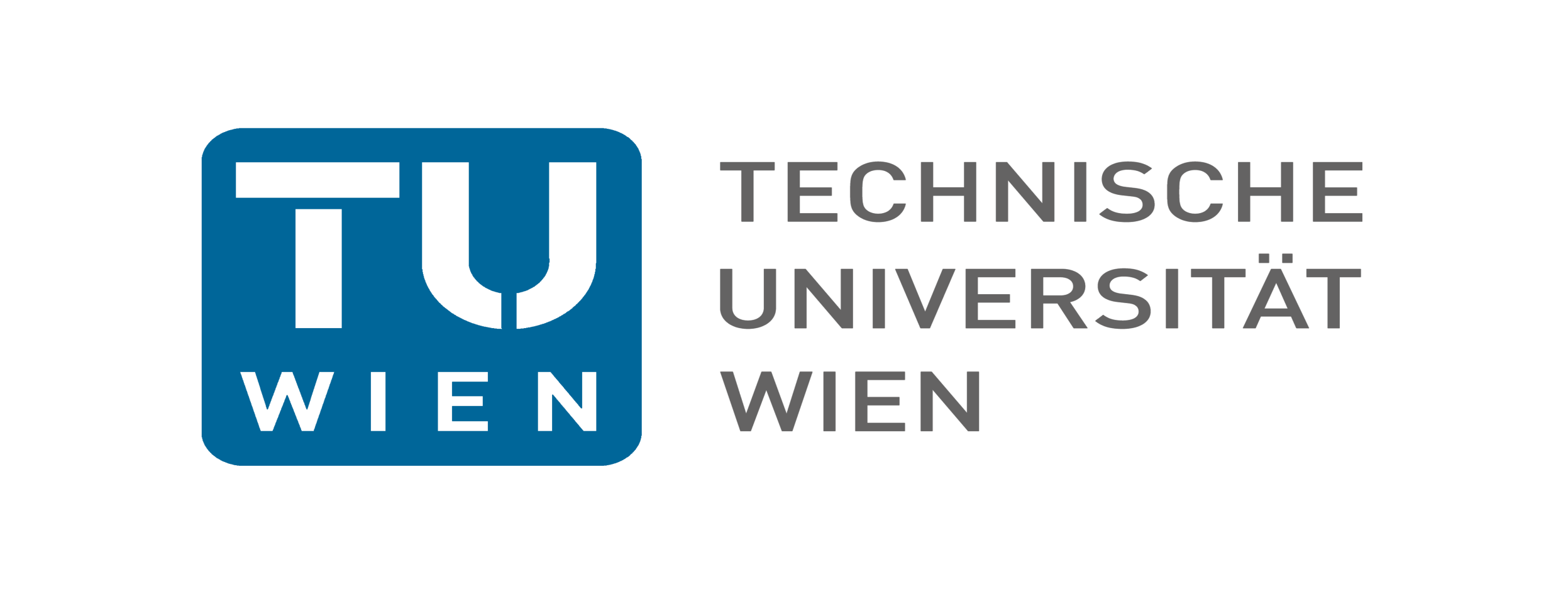Joint Theory Seminar
Tuesday 14:00-15:00
WS2023
Schedule
back| Date | Location | Title | Speaker | Abstract |
|---|---|---|---|---|
| 10.10.2023 | TU | Exact pp-wave solutions in chiral HSGRA | Tung Tran | We derive exact pp-wave solution of chiral HSGRA using free differential algebra (FDA) approach a la Newman-Penrose formalism. We then generalize this result to pp-wave-like higher-spin solutions of chiral higher-spin gravity (HSGRA) and show that linear solutions are, remarkably, also solutions of the full non-linear system of chiral-FDA. Our results show that massless chiral higher-spin gauge fields can propagate on any Petrov type-N pp-wave background despite the fact that chiral HSGRA does not have the standard Einstein-Hilbert term in its action. |
| 17.10.2023 | UV | Black Hole Binary Dynamics from Classical and Quantum Gravitational Scattering | Thibault Damour | Gravitational wave signals from coalescing binary black holes are detected, and analyzed, by using large banks of template waveforms. The construction of these templates makes an essential use of the analytical knowledge of the motion and radiation of gravitationally interacting binary systems. A new angle of attack on gravitational dynamics consists of considering (classical or quantum) scattering states. Modern amplitude techniques have recently give interesting novel results. These results are reaching a level where subtle conceptual issues arise (quantum-classical transition, radiative effects versus conservative dynamics, massless limit,...). |
| 24.10.2023 | TU | Weyl-Ambient Metrics, Obstruction Tensors and Their Roles in Holography | Weizhen Jia | Weyl geometry is a natural extension of conformal geometry with Weyl covariance mediated by a Weyl connection. We generalize the Fefferman-Graham (FG) ambient construction for conformal manifolds to a corresponding construction for Weyl manifolds. We first introduce the Weyl-ambient metric motivated by the Weyl-Fefferman-Graham (WFG) gauge, which is a generalization of the FG gauge for asymptotically locally AdS (AlAdS) spacetimes. Then, the Weyl-ambient space as a pseudo-Riemannian geometry induces a codimension-2 Weyl geometry. Through the Weyl-ambient construction, we investigate Weyl-covariant quantities on the Weyl manifold and define Weyl-obstruction tensors. We show that Weyl-obstruction tensors appear as poles in the Fefferman-Graham expansion of the AlAdS bulk metric for even boundary dimensions. |
| 31.10.2023 | UV | Topology change and heterotic flux vacua | Ilarion Melnikov | I will review the status of heterotic flux compactification with 8 and 4 supercharges. The underlying geometry of these compactifications is a principal torus bundle over a K3 surface, and T-duality in the torus fiber leads to equivalences between topologically distinct configurations. In particular, I will argue that all such vacua that preserve 8 supercharges can be related to more conventional (flux free) compactifications. These dualities lead to a rich interconnected web of stringy geometries with a fairly direct worldsheet CFT interpretation. Orbifolds of such configurations can partially break supersymmetry and reduce the gauge group rank. On the other hand, there are four-dimensional configurations that cannot be T-dualized to configurations without flux; these configurations place strong constraints on the underlying K3 geometry. If there is time, I will also discuss these equivalences from the dual M-theory point of view. |
| 07.11.2023 | UV | Anomalies, Boundaries, and Boundary States | Dmitri Vassilevich | Quantum anomalies on manifolds with boundaries naturally have boundary contributions. In CFTs, these contributions are responsible for boundary central charges, while in the condensed matter applications they define anomalous Hall conductivity of the boundary, for example. In this talk, I will describe the main properties of boundary anomalies and the methods of computations. I will show, that in some cases the anomalies on manifolds with boundaries are totally defined by anomalies in effective boundary theories. (This phenomenon is called the anomaly inflow.) I will conclude with a discussion of the relations between anomalies and boundary states. |
| 14.11.2023 | TU | Cosmic Imprints of Quantum Gravity: Insights from the Swampland Program | Macro Scalisi | Common lore suggests that effects of quantum gravity are difficult to unravel. The Planck scale is in fact about 15 orders of magnitude above the highest energy reached on Earth, namely at the Large Hadron Collider. The Swampland program suggests instead that the quantum gravity cut-off can decrease thus making quantum gravity effects accessible at energies lower than the Planck scale. In this talk, I will first review some basics of Swampland program; I will then concretely show how the quantum gravity cut-off can drop in certain situations; I will finally explore the implications of this fact for cosmology. |
| 21.11.2023 | UV | title | speaker | abstract |
| 28.11.2023 | TU | Bethe equations and 2d conformal field theory | Tomas Prochazka | The usual approach to 2d conformal field theory relies on the underlying Virasoro algebra. I want to discuss how this fits into a broader framework of integrable systems. In particular, the states in the Hilbert space can be labeled by solutions of algebraic equations, the Bethe equations. Perhaps surprisingly, Bethe equations associated to Virasoro algebra and its higher spin generalizations are very closely related to those of simplest Heisenberg SU(2) XXX spin chain. If time permits, I will discuss the set of Bethe equations associated to 2d free boson which is closely related to solvable generalizations of the quantum mechanical harmonic oscillator and the classical system of Calogero particles. |
| 05.12.2023 | UV | AdS/Yang Mills: from QCD to Composite Higgs | Nick Evans | I discuss a programme to describe the chiral symmetry breaking dynamics and spectra of all asymptotically free non-supersymmetric gauge theories using holography. Our holographic description inputs the perturbative running of the gauge theory to motivate the non-perturbative running of the anomalous dimensions of operators. The dynamics and spectra are then predicted. In addition we use Witten's multi-trace prescription to include strongly coupled NJL four fermion interactions. Masses and mass splittings require a full non-abelian flavour structure and a bulk higgs mechanism. Examples of interesting theories are: QCD where the spectra can be systematically improved by higher dimension operators (in the spirit of "perfection" on the lattice) and predictions made for exotics such as the sexaquark mass; theories with multiple fermion representations where large mass gaps between [...] |
| 12.12.2023 | TU | Eisenstein series over general automorphic groups, with applications to string theory, supergravity and conformal field theory | Abhiram M Kidambi | In mathematics, Eisenstein series play a fundamental role in the spectral theory of automorphic forms and their study has led to important mathematical discoveries which are intricately tied to the Langlands program. They build a bridge between the analytic, algebraic and spectral theory of automorphic forms. In string theory, as one often learns in an introductory, the classical Eisenstein series (Eisenstein series for SL(2,Z)) play a vital role in computing string amplitudes, partition functions of conformal field theories. However, there are many other automorphic groups that arise in string theory whose Eisenstein series have only just been given physical interpretations. I will summarize some of these developments in this talk. The idea of the talk is to provide a pedagogical introduction to Eisenstein series in the first half, and in the second half provide at least examples of novel string theoretic applications of Eisenstein series: Construction of a large family of Lattice CFTs (Non-holomorphic Eisenstein series) U-duality orbits of 1/2 BPS black holes in exceptional supergravities (Eisenstein series over exceptional groups) (Time permitting): Siegel Eisenstein series and Vacua of Heterotic Strings (Time permitting): Constraints on elliptic genera of N = (0,1) SCFT and the Stolz-Teichner conjecture |
| 19.12.2023 | UV | (Weyl-)Fefferman-Graham asymptotic symmetries | Arnaud Delfante | Within the framework of asymptotic symmetries as applied to the AdS/CFT correspondence, there is an increasing body of evidence suggesting that the symmetries employed for gauge-fixing might carry charge. Consequently, setting the associated fields to zero is a physical constraint on the system, which should be avoided. In this talk, we will examine a partial fixing of the Fefferman-Graham (FG) gauge, referred to as the Weyl-Fefferman-Graham (WFG) gauge, which restores boundary Weyl covariance. We will show that the diffeomorphism mapping WFG to FG can be charged and discuss how this relates to holography. |
| 09.01.2024 | UV | title | speaker | abstract |
| 16.01.2024 | UV | Probing the asymptotic structure of 4d Einstein gravity: flat from AdS | Matthieu Vilatte | My talk will focus on the structure of gravity at large distances and especially on how one can get insights on the asymptotically flat structure from the one of Anti-de Sitter spacetimes. I will start by recalling some basics on the gauge fixing approach to the IR structure of gravity, insisting on the fundamental examples of the Fefferman-Graham and Bondi gauges and on asymptotically AdS and flat spacetimes. As Ricci flat solutions are usually obtained from a the \Lambda -> 0 limit of Einsteinâs spacetimes, I will describe how one can get the flat solution space and flux/balance equations from a careful Laurent expansion of the AdS energy-momentum tensor and the requirement of the line-element finiteness, the analysis being conducted in a covariant version of the Newman-Unti gauge that will be presented prior to these developments. |
| 23.01.2024 | TU | A combinatorial derivation of the standard model particles from the Dirac Lagrangian | Charlie Beil | I will begin by introducing a modification to general relativity where time is stationary along the worldlines of fundamental particles. The aim of this new geometry is to describe certain quantum phenomena using (classical) spacetime metrics which are degenerate. For example, on such a spacetime the dimensions of tangent spaces vary, and spin wavefunction collapse is modeled by the projection from one tangent space to another. I will then describe how the free Dirac Lagrangian on such a spacetime yields the standard model particles. Specifically, we obtain three generations of leptons and quarks, the electroweak gauge bosons, and the Higgs boson -- all with their correct spin, electric charge, and color charge -- together with precisely one new massive spin-2 boson. Finally, I will show how the trivalent interaction vertices arise from the combinatorics of the Dirac Lagrangian subject to two simple rules. In particular, we obtain electroweak parity violation for both leptons and quarks. |
About
back

The Joint Theory Seminar is held alternately at the University of Vienna and the Technische Universität Wien, either on site or online via Zoom.
The Topic of the seminar is recent theoretical research in the areas of mathematical physics, high energy physics, physics of fundamental interactions and particle physics.
The target audience for the talks are PhDs, postdocs and faculty members.
To stay informed please subscribe to our mailing list.
How to participate
Attending
Anyone can attend. To receive the link to the Zoom meeting please contact one of the organizers.
Giving a talk
If you want to give a talk contact Adrien Fiorucci or Tung Tran.
Contact
backDaniel Grumiller
Associate Prof. Dr.techn.
Black holes and holography
Technische Universität Wien
Stefan Fredenhagen
Univ.-Prof. Dr.
Mathematical physics
University of Vienna
Adrien Fiorucci
Postdoctoral researcher
Black holes and holography
Technische Universität Wien
Tung Tran
Postdoctoral researcher
Mathematical physics
University of Vienna